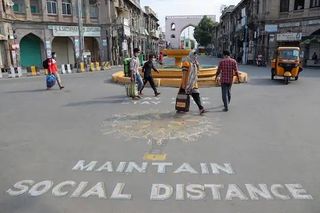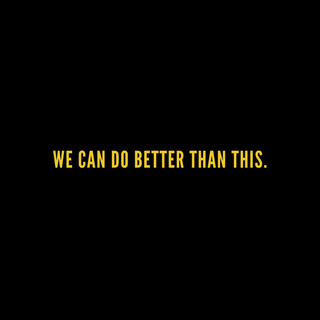
The Challenges India Faces With Unlock 1.0 and How to Solve Them
We need a state-backed, pan-India information center with specific guidelines that clearly delineates and demarcates real news vis-a-vis fake news.

With “Unlock 1.0,” the pan-India Covid19 lockdown is being relaxed in many states. The focus is on returning to normalcy for essential services, such as transport systems and economic activities, in industries that can sustain key preventive measures. Although living with Covid19 will remain a considerable challenge for a long time, this period can be shortened with certain sustained policy enactments. The following are immediate challenges that India faces, along with plausible solutions that could make our lives “Covid19-free” in the near future.
Data sharing between states
Both internationally well-connected and vulnerable states of Kerala and Goa have done exceedingly well in terms of restricting the spread of Covid19 into communes. However, neither is this learning getting entrusted to critical states like Maharashtra, Bihar, or Delhi, nor are these vulnerable states attempting to reach out. For prevention and research, it is critical to review and share intricate information — like susceptibility attributes of both active and recovered patients, including age, immunity, re-infection cases — in order to assist other states in forecasting the progression of the disease. This exercise can vastly improve the preparation of an otherwise grossly underprepared and under-resourced public health infrastructure of India.
An unknown epidemic curve
As things stand, the epidemic curve for Covid-19 appears to be a “propagated or progressive source epidemic,” which means that it is expected to have a series of successively larger peaks (one incubation period, or roughly 11–14 days, apart). In each of these waves, the number of infected people tends to increase, with a fair number of days in between with respect to doubling of cases, because of preventive lockdowns in place.
In the case of India, owing to the movement of the migrant population during the lockdown, the possibility of latent community transmission is imminent. Thus, the number of new infections on a daily basis may remain consistent for many days, but the actual decline in cases to 0 will be a much longer trajectory. What this means is that the epidemic curve may get flattened, but the tail of the curve will be extremely long. This, in turn, would mean that measures like social distancing will need to remain for a considerably long time, leaving a highly aggrieved economy behind.
Mystery around Covid19 characteristics
With each passing day, however, new clinical manifestations are being appended in an already brimming list of Covid19 symptoms. Further, a worrying trend of new mutations is being reported from provinces in China.
Related on The Swaddle:
Debunking the Myths Around Covid19
How this infection traveled from Wuhan to many international cities, but not to Beijing or Shanghai, remains a mystery. This suggests a complex epidemiological pattern with respect to the geographical distribution, necessitating further exploration. In India, the disease is predominantly centered in the states of Maharashtra and Delhi with varying intensities, despite both states being well equipped with tertiary healthcare facilities (both public/private) and having access to high-end I.C.U infrastructure. In comparison, states with modest tertiary care infrastructure, like Rajasthan, Uttar Pradesh, and Madhya Pradesh, are leading with higher recoveries. All this calls for further research on the epidemiological and clinical aspects of Covid19 in the country, covering all parameters of clinical characteristics.
Long-term effects of lockdowns
The new normal will require reinforcement of key learning from all countries, with concentrated efforts on all aspects of health, including the mental health of healthcare providers and recovered patients who would have remained engaged in this containment exercise for way too long. Young children and women are also undergoing immense trauma during this lockdown due to domestic abuse, unintended pregnancies, physical abuse. The Ministry of Health & Family Welfare should formulate a strategy to identify and provide professional therapeutic support to the affected, which will enable all states to learn.
Innovating GLOCAL policies
While it’s great to hear standard guidelines, like washing hands for a minimum of 20–30 seconds under running water (as per World Health Organization, 2009), is this even feasible in developing and less developed countries? With the majority of the population in India still having limited access to taps and tap-water, this supposedly standard procedure cannot be implemented even in A-tier cities like New Delhi or Mumbai, let alone in the interiors of the country. The solution? Creation and implementation of new GLOCAL standard guidelines while keeping public health and availability of resources with respect to water and sanitation in mind. These recommended guidelines would need to be implemented in different settings, accounting for both rural and urban populations.
Recognition of sanitation workers
Historically, sanitation workers have not been recognized or elevated by the state, including since the onset of the Swachh Bharat Abhiyan. With the Covid19 pandemic, however, people are now understanding the importance of this section of workers. Therefore, this is a crucial opportunity to elevate their status and provide safer and better working conditions for them.
A policy that formally recognizes all frontline sanitation workers as “Frontline Health Workers” ought to be implemented on a priority basis. These frontline warriors must be accorded the same dignity as doctors and paramedical professionals, with clearly defined minimum wages across the country. Their work also should be classified under the “risky/hazardous” category and they should be provided health insurance facilities as due recognition for their crucial contribution in disposal of bio-medical waste. This exercise will not only work towards breaking the caste barriers associated with these professions but also provide India an opportunity to permanently get rid of the nefarious customs that have become embroiled within staff recruitment.
Consistent focus on chronic communicable diseases
The mortalities associated with tuberculosis far outnumber what the world will witness with respect to Covid19. However, both TB and malaria are considered mundane illnesses that are not complex enough to warrant a multifaceted interdisciplinary approach for their elimination. Two million cases, according to the World Health Organization, of tuberculosis were reported in India as of 2019, which is 27% of the total global cases. Further, the country is showing a growth of 60% in the total number of reported cases as compared to the last year.
Although India has shown tremendous progress in achieving fewer cases of malaria in 2018–2019 — a decline of 22% from the previous year — it is still far from its goal of eliminating the disease before 2030.
Thus, national programs should remain focused on these communicable diseases and not lose steam while trying to contain Covid19, which could become another chronic communicable disease.
Overhauling the healthcare system
Coveted international healthcare systems, like the United Kingdom’s National Health System (NHS), are struggling with the sheer number of cases, exposing the enormity of the situation at hand. There is an urgent need for assessing and overhauling India’s healthcare system.
India needs to fully comprehend that insurance-led models like that of the United States will simply not work for communicable diseases. Integrating universal healthcare into the system by strengthening primary healthcare – often considered tedious and extensive – is the only practical solution for eliminating communicable diseases in countries like India.
Related on The Swaddle:
AIIMS Fire Is Symbolic of India’s Failing Public Healthcare System
A plausible solution, to begin with, would be the creation of manufacturing zones dedicated to the specialized medical equipment required in intensive care units. This ideally needs to be backed with a centralized repository of critical medical equipment, with a logistical backup for quick transfer and installation. Public-private partnership in healthcare also needs to be implemented in its true spirit, with the public being the centre of focus. Innovative CSR-led models, like the recent experiment of opening up a Covid19 specialty hospital in Gurugram, are also a welcome step.
Controlling ‘infodemics’
An infodemic is a greater challenge than the epidemic itself – a problem that has been more pronounced in India during different stages of lockdown. Online messaging, using tools like Twitter, has consistently targeted different religious and social communities, brandishing them as the sole carriers of infection. There is a need for a state-backed, pan-India information center with specific guidelines that clearly delineates and demarcates real news vis-a-vis fake news, disseminating the same to the population at regular intervals. Traditional mass media also needs to be regulated with respect to spreading speculative news with clear disciplinary provisions in place.
Ranju Anthony is a doctoral student in public health from a Central University based in New Delhi. His work spanning more than two decades encompasses different facets of the development sector, including strategic planning, partnerships and stakeholder engagement, developing collaborative ecosystems and design implementation of large scale social interventions. He has worked with international consulting firms, multilateral donor organizations and social enterprises in international markets.
Related


Chinese Legislation Defines Sexual Harassment For The First Time Ever
